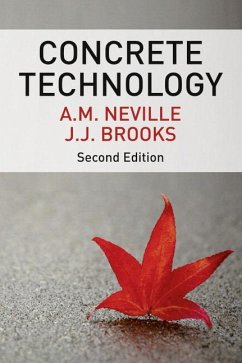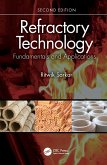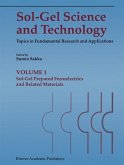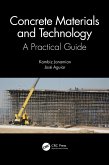Concrete Technology
Second edition
The classic textbook and reference guide to concrete updated to the 2008 standards.
The success of any concrete structure depends on the designers sound knowledge of concrete and its behaviour under load, under temperature and humidity changes, and under exposure to the relevant environment and industrial conditions.
This book gives students a thorough understanding of all aspects of concrete technology from first principles. It covers concrete ingredients, properties and behaviour in the finished structure with reference to national standards and recognised testing methods used in Britain, the European Union and the United States. Examples and problems are given throughout to emphasise the important aspects of each chapter.
An excellent coursebook for all students of Civil Engineering, Structural Engineering and Building at degree or diploma level, Concrete Technology will also be a valuable reference book for practising engineers in the field.
The Authors
A.M. Neville is a Civil Engineering Consultant. He is a Past Vice-President of the Royal Academy of Engineering and a former Principal and Vice Chancellor of the University of Dundee. He has many years experience of teaching, research and consultancy in Civil and Structural Engineering in Europe and North America, and the Far East. He has numerous awards and medals, and is an Honorary Member of the American Concrete Institute, the British Concrete Society and the Brazilian Concrete Institute.
J.J. Brooks is a Consultant, formerly a Senior Lecturer in Civil Engineering Materials and Director of Postgraduate Studies in the School of Civil Engineering at the University of Leeds. He is a member of the American Concrete Institute and a Fellow of the International Masonry Society.
Both are co-authors of the major reference work Creep of Plain and Structural Concrete (Construction Press, 1983).
Product Description
The success of any concrete structure depends on the designers sound knowledge of concrete and its behaviour under load, under temperature and humidity changes, and under exposure to the relevant environment and industrial conditions.
This book gives students a thorough understanding of all aspects of concrete technology from first principles. It covers concrete ingredients, properties and behaviour in the finished structure with reference to national standards and recognised testing methods used in Britain, the European Union and the United States. Examples and problems are given throughout to emphasise the important aspects of each chapter.
An excellent coursebook for all students of Civil Engineering, Structural Engineering and Building at degree or diploma level, Concrete Technology will also be a valuable reference book for practising engineers in the field.
Features + Benefits
Concrete ingredients, properties and behaviour in the finished structure
Reference to national standards and recognised testing methods used in Britain, the European Union and the United States.
Examples and problems are given throughout to emphasise the important aspects of each chapter.
Backcover
Concrete Technology
Second edition
The classic textbook and reference guide to concrete updated to the 2009 standards.
The success of any concrete structure depends on the designers sound knowledge of concrete and its behaviour under load, under temperature and humidity changes, and under exposure to the relevant environment and industrial conditions.
This book gives students a thorough understanding of all aspects of concrete technology from first principles. It covers concrete ingredients, properties and behaviour in the finished structure with reference to national standards and recognised testing methods used in Britain, the European Union and the United States. Examples and problems are given throughout to emphasise the important aspects of each chapter.
An excellent coursebook for all students of Civil Engineering, Structural Engineering and Building at degree or diploma level, Concrete Technology will also be a valuable reference book for practising engineers in the field.
The Authors
A.M. Neville is a Civil Engineering Consultant. He is a Past Vice-President of the Royal Academy of Engineering and a former Principal and Vice Chancellor of the University of Dundee. He has many years experience of teaching, research and consultancy in Civil and Structural Engineering in Europe and North America, and the Far East. He has numerous awards and medals, and is an Honorary Member of the American Concrete Institute, the British Concrete Society and the Brazilian Concrete Institute.
J.J. Brooks is a Consultant, formerly a Senior Lecturer in Civil Engineering Materials and Director of Postgraduate Studies in the School of Civil Engineering at the University of Leeds. He is a member of the American Concrete Institute and a Fellow of the International Masonry Society.
Both are co-authors of the major reference work Creep of Plain and Structural Concrete (Construction Press, 1983).
1. Concrete As A Structural Material.
2. Cement.
3. Normal Aggregate.
4. Quality Of Water.
5. Fresh Concrete.
6. Strength Of Concrete.
7. Mixing, Handling, Placing And Compacting Concrete.
8. Admixtures.
9. Temperature Problems In Concreting.
10. Development Of Strength.
11. Other Strength Properties.
12. Elasticity And Creep.
13. Deformation And Cracking Independent Of Load.
14. Permeability And Durability.
15. Resistance To Freezing And Thawing.
16. Testing.
17. Compliance With Specifications.
18. Lightweight Concrete.
19. Mix Design.
20. Special Concretes.
An Overview.
Relevant American and British Standards
Index.
The success of any concrete structure depends on the designer's sound knowledge of concrete and its behaviour under load, under temperature and humidity changes, and under exposure to the relevant environment and industrial conditions. This book gives students a thorough understanding of all aspects of concrete technology from first principles. It covers concrete ingredients, properties and behaviour in the finished structure with reference to national standards and recognised testing methods used in Britain, the European Union and the United States. Examples and problems are given throughout to emphasise the important aspects of each chapter. An excellent coursebook for all students of Civil Engineering, Structural Engineering and Building at degree or diploma level, Concrete Technology will also be a valuable reference book for practising engineers in the field.
Hinweis: Dieser Artikel kann nur an eine deutsche Lieferadresse ausgeliefert werden.
Second edition
The classic textbook and reference guide to concrete updated to the 2008 standards.
The success of any concrete structure depends on the designers sound knowledge of concrete and its behaviour under load, under temperature and humidity changes, and under exposure to the relevant environment and industrial conditions.
This book gives students a thorough understanding of all aspects of concrete technology from first principles. It covers concrete ingredients, properties and behaviour in the finished structure with reference to national standards and recognised testing methods used in Britain, the European Union and the United States. Examples and problems are given throughout to emphasise the important aspects of each chapter.
An excellent coursebook for all students of Civil Engineering, Structural Engineering and Building at degree or diploma level, Concrete Technology will also be a valuable reference book for practising engineers in the field.
The Authors
A.M. Neville is a Civil Engineering Consultant. He is a Past Vice-President of the Royal Academy of Engineering and a former Principal and Vice Chancellor of the University of Dundee. He has many years experience of teaching, research and consultancy in Civil and Structural Engineering in Europe and North America, and the Far East. He has numerous awards and medals, and is an Honorary Member of the American Concrete Institute, the British Concrete Society and the Brazilian Concrete Institute.
J.J. Brooks is a Consultant, formerly a Senior Lecturer in Civil Engineering Materials and Director of Postgraduate Studies in the School of Civil Engineering at the University of Leeds. He is a member of the American Concrete Institute and a Fellow of the International Masonry Society.
Both are co-authors of the major reference work Creep of Plain and Structural Concrete (Construction Press, 1983).
Product Description
The success of any concrete structure depends on the designers sound knowledge of concrete and its behaviour under load, under temperature and humidity changes, and under exposure to the relevant environment and industrial conditions.
This book gives students a thorough understanding of all aspects of concrete technology from first principles. It covers concrete ingredients, properties and behaviour in the finished structure with reference to national standards and recognised testing methods used in Britain, the European Union and the United States. Examples and problems are given throughout to emphasise the important aspects of each chapter.
An excellent coursebook for all students of Civil Engineering, Structural Engineering and Building at degree or diploma level, Concrete Technology will also be a valuable reference book for practising engineers in the field.
Features + Benefits
Concrete ingredients, properties and behaviour in the finished structure
Reference to national standards and recognised testing methods used in Britain, the European Union and the United States.
Examples and problems are given throughout to emphasise the important aspects of each chapter.
Backcover
Concrete Technology
Second edition
The classic textbook and reference guide to concrete updated to the 2009 standards.
The success of any concrete structure depends on the designers sound knowledge of concrete and its behaviour under load, under temperature and humidity changes, and under exposure to the relevant environment and industrial conditions.
This book gives students a thorough understanding of all aspects of concrete technology from first principles. It covers concrete ingredients, properties and behaviour in the finished structure with reference to national standards and recognised testing methods used in Britain, the European Union and the United States. Examples and problems are given throughout to emphasise the important aspects of each chapter.
An excellent coursebook for all students of Civil Engineering, Structural Engineering and Building at degree or diploma level, Concrete Technology will also be a valuable reference book for practising engineers in the field.
The Authors
A.M. Neville is a Civil Engineering Consultant. He is a Past Vice-President of the Royal Academy of Engineering and a former Principal and Vice Chancellor of the University of Dundee. He has many years experience of teaching, research and consultancy in Civil and Structural Engineering in Europe and North America, and the Far East. He has numerous awards and medals, and is an Honorary Member of the American Concrete Institute, the British Concrete Society and the Brazilian Concrete Institute.
J.J. Brooks is a Consultant, formerly a Senior Lecturer in Civil Engineering Materials and Director of Postgraduate Studies in the School of Civil Engineering at the University of Leeds. He is a member of the American Concrete Institute and a Fellow of the International Masonry Society.
Both are co-authors of the major reference work Creep of Plain and Structural Concrete (Construction Press, 1983).
1. Concrete As A Structural Material.
2. Cement.
3. Normal Aggregate.
4. Quality Of Water.
5. Fresh Concrete.
6. Strength Of Concrete.
7. Mixing, Handling, Placing And Compacting Concrete.
8. Admixtures.
9. Temperature Problems In Concreting.
10. Development Of Strength.
11. Other Strength Properties.
12. Elasticity And Creep.
13. Deformation And Cracking Independent Of Load.
14. Permeability And Durability.
15. Resistance To Freezing And Thawing.
16. Testing.
17. Compliance With Specifications.
18. Lightweight Concrete.
19. Mix Design.
20. Special Concretes.
An Overview.
Relevant American and British Standards
Index.
The success of any concrete structure depends on the designer's sound knowledge of concrete and its behaviour under load, under temperature and humidity changes, and under exposure to the relevant environment and industrial conditions. This book gives students a thorough understanding of all aspects of concrete technology from first principles. It covers concrete ingredients, properties and behaviour in the finished structure with reference to national standards and recognised testing methods used in Britain, the European Union and the United States. Examples and problems are given throughout to emphasise the important aspects of each chapter. An excellent coursebook for all students of Civil Engineering, Structural Engineering and Building at degree or diploma level, Concrete Technology will also be a valuable reference book for practising engineers in the field.
Hinweis: Dieser Artikel kann nur an eine deutsche Lieferadresse ausgeliefert werden.








